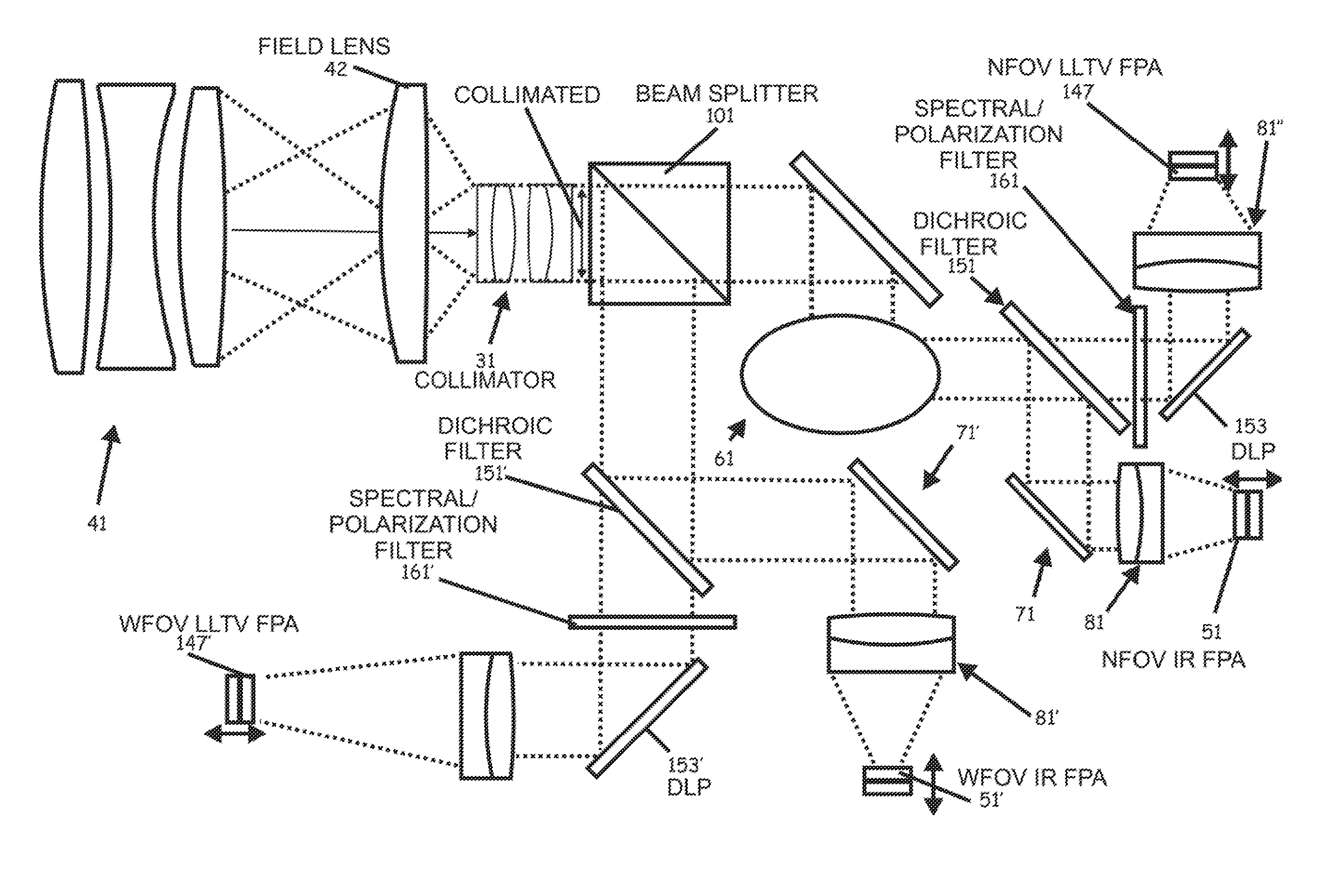Optical detection and ranging sensor system for sense and avoid, and related methods
a sensor system and optical detection technology, applied in the field of range detection and collision avoidance, can solve the problems of high false alarm rate, unwittingly highlighting, system affecting the operational mission of the uas, etc., and achieve the effect of reducing false alarm ra
- Summary
- Abstract
- Description
- Claims
- Application Information
AI Technical Summary
Benefits of technology
Problems solved by technology
Method used
Image
Examples
Embodiment Construction
[0049]The present invention will now be described more fully hereinafter with reference to the accompanying drawings, which illustrate embodiments of the invention. This invention may, however, be embodied in many different forms and should not be construed as limited to the illustrated embodiments set forth herein. Rather, these embodiments are provided so that this disclosure will be thorough and complete, and will fully convey the scope of the invention to those skilled in the art. Like numbers refer to like elements throughout. Prime notation, if used, indicates similar elements in alternative embodiments.
[0050]As perhaps best shown in FIG. 1, an apparatus 20 carried by an unmanned vehicle as known to those skilled in the art, such as, for example, aerial vehicle 21, to provide passive sensing and facilitate avoiding, e.g., airborne obstacles, also as known to those skilled in the art, is provided. The apparatus 20 can include at least one, but typically five, optical systems 23...
PUM
 Login to View More
Login to View More Abstract
Description
Claims
Application Information
 Login to View More
Login to View More - R&D
- Intellectual Property
- Life Sciences
- Materials
- Tech Scout
- Unparalleled Data Quality
- Higher Quality Content
- 60% Fewer Hallucinations
Browse by: Latest US Patents, China's latest patents, Technical Efficacy Thesaurus, Application Domain, Technology Topic, Popular Technical Reports.
© 2025 PatSnap. All rights reserved.Legal|Privacy policy|Modern Slavery Act Transparency Statement|Sitemap|About US| Contact US: help@patsnap.com



